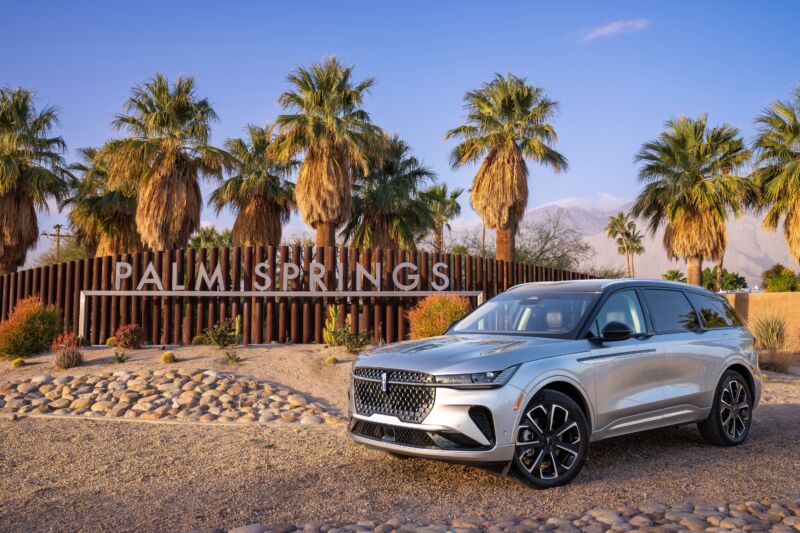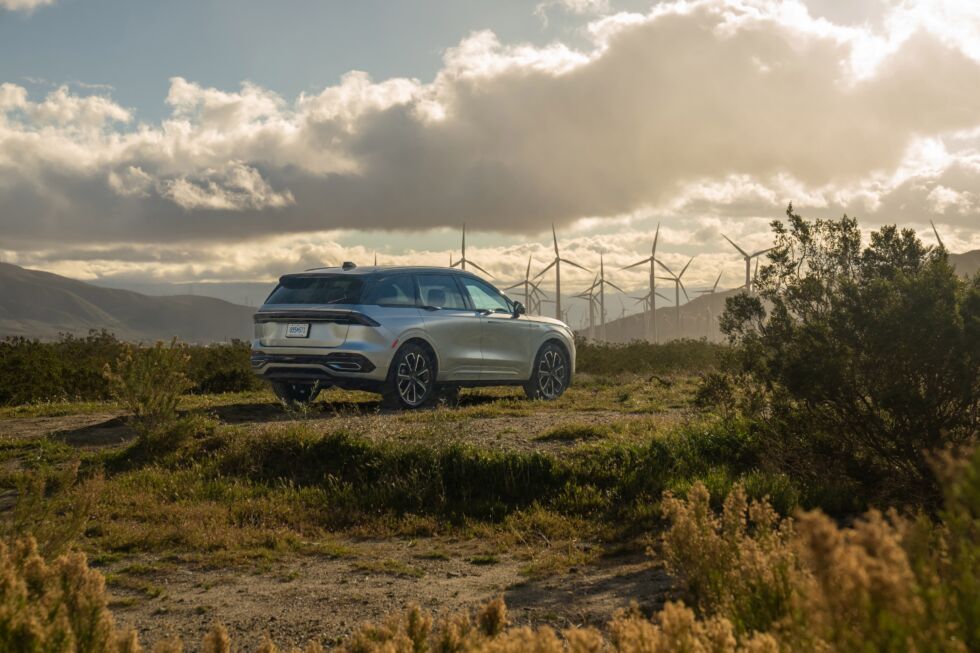anyone seen captain nemo? —
The Nautilus might just be enough to finally get people into Lincoln dealerships.

Enlarge / The Lincoln Nautilus is now in its fourth generation.
Lincoln
PALM SPRINGS, Calif.—Lincoln is one of those car companies that for years will give the impression that the people in charge are asleep at the proverbial wheel and then all of a sudden will debut a total knockout. It’s happened a few times throughout the brand’s long history, most recently with the fourth-generation Navigator. The introduction of the 2018 Navigator also sparked a huge overhaul in design and technology for the brand that catapulted it from “decent free rental car upgrade” to a maker of luxury SUVs that people might want to buy. The 2024 Lincoln Nautilus is just such an SUV.
In the hierarchy of Lincoln models, the Nautilus sits neatly between the Aviator and the smaller Corsair. It’s arguably one of the best looking of the current crop of Lincolns, and it’s positioned to compete with the likes of the Lexus RX, the Cadillac XT6 and Volvo’s XC60, among others. But does it actually compete? Or is it simply another car for the Enterprises and Hertzes of the world?
The 2024 Nautilus is available in two flavors: a purely internal combustion-powered version with a 250 hp (186 kW) turbocharged inline-four that also puts out 280 lb-ft (380 Nm) of torque and is paired with an eight-speed automatic transmission; and a much more interesting hybrid version, which offers up 310 combined hp (231 kW) that’s paired with a CVT transmission. The Nautilus is only available with all-wheel drive.

Enlarge / The hybrid is only $1,500 more, and you get more power and much better efficiency.
Lincoln
The hybrid variant is a traditional series hybrid, rather than a plug-in hybrid as we’ve seen on the Corsair. Honestly, the lack of a plug-in variant of the Nautilus is kind of a bummer because its character would suit the Nautilus so well, but like the middle-aged sad dad band sang at my wedding reception, you can’t always get what you want. Still, between the two variants, the hybrid is the one to get for a few reasons, and it’s only a $1,500 upcharge versus the gas-only model.
In addition to the power and torque increases offered by the hybrid system, the overall efficiency boost is welcome. The Nautilus Hybrid is good for an EPA-rated 30 mpg (7.84 L/100 km) city, 31 mpg (7.6 L/100 km) highway for a 30 mpg combined. The gasser only manages 21 mpg (11.2 L/100/ km) city, 29 mpg (8.1 L/100 km) highway, and 26 mpg (9 L/100 km) combined. The hybrid system is smooth and well-integrated, too, and I find that an ignorable hybrid drivetrain is a good hybrid drivetrain.
The HEV differentiates itself in other ways, too. Where the ICE model makes do with a non-adjustable suspension, the hybrid gets continuously adjustable dampers and, as a result, a very smooth and Lincoln-appropriate ride. Those dampers are able to be set into a handful of drive modes. These are labeled Normal, Conserve, Excite, Slippery, and Deep Conditions.
There is a noticeable difference between the settings both in the suspension and the accelerator calibration, but it’s not so dramatic that you wouldn’t, say, put it in “Deep Conditions” so you can make a Dune joke on Instagram based on the little animated digital desert planet that’s displayed on the screen and then forget to change it back afterward. Not that I know from experience or anything. Basically, the suspension is a bunch of levels of softness that go from newborn kitten fluff to Ikea couch pillow, so don’t expect corner-carving prowess even in the slightly misleading “Excite” mode.
The Nautilus’ power steering is electric and pretty light in all settings, and the braking system feels smooth and as strong as you’d want it to be when panic-stopping the 4,517-lb (2,049 kg) hybrid. Nothing feels like an afterthought here, apart from the borderline shocking levels of road noise transmitted through the Nautilus’ great big wheels and low-profile tires. The Black Label we tested was on 22-inch wheels and, while not a dealbreaker, the tires make a lot of noise. If I were buying one, I’d get it with the smallest wheels possible and hope that taller sidewalls restore some of the Nautilus’ potential for serenity.